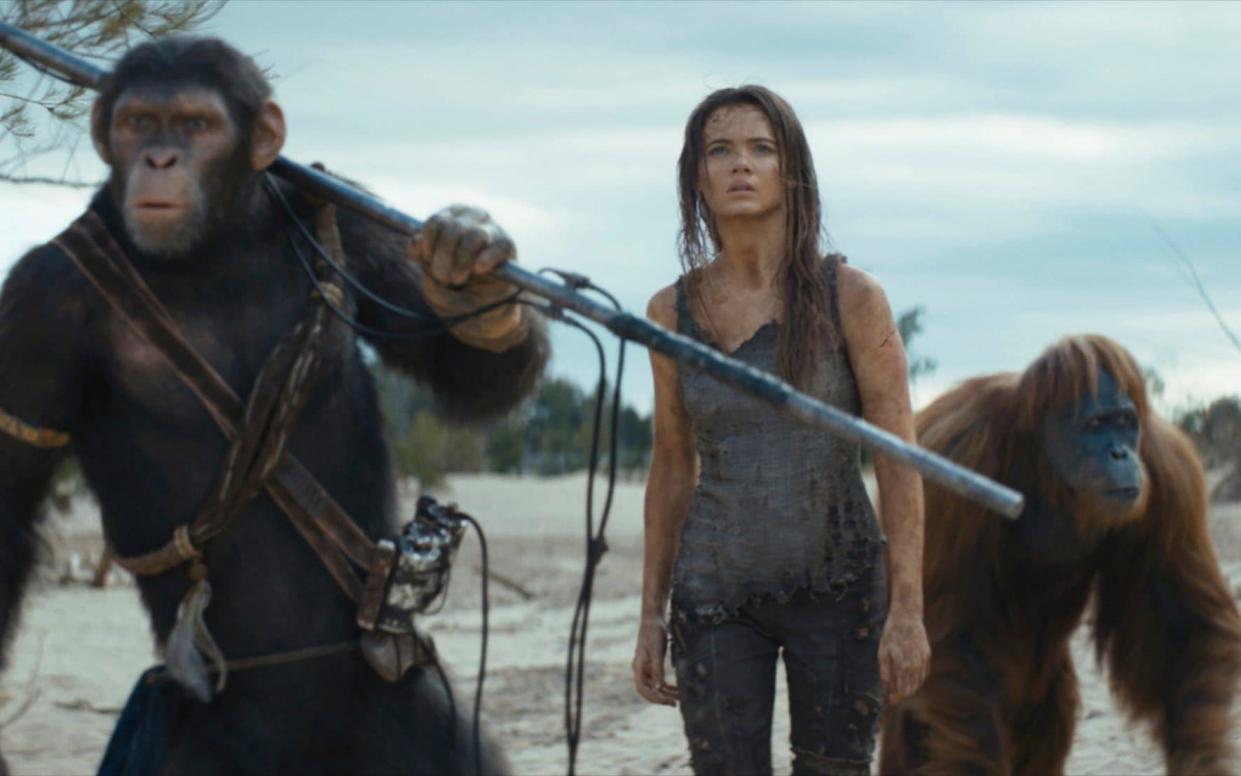Kingdom of the Planet of the Apes: This handsome blockbuster harks back to the days of the Hollywood Western

The modern-day Planet of the Apes franchise has always sounded like a tonal disaster, and the fourth instalment is no different: it’s an epic adventure, played entirely straight, in which our heroes have to thwart a mad chimpanzee who wants to hijack a tank platoon. On screen, however, these things have always managed to click – perhaps in part because the big technological selling point (see how realistic the apes are!) depends on emotional connection rather than mindless explosions.
As such, the series has been able to stealthily work in some unstylish genres: the third chapter, Matt Reeves’s 2017 film War for the Planet of the Apes, for instance, was an old-fashioned prisoner-of-war drama that just happened to involve orangutans. Meanwhile, Wes Balls’ handsome sequel, set 300 years later (the first in the reboot franchise without Andy Serkis’s Caesar), resembles a classic studio Western in which a frontier town is sacked by outlaws and its residents dragged off to a fortified township whose charismatic governor is in manifest destiny mode.
All but two of the characters involved in the above are motion-captured apes – and perhaps this sort of improbable context is the safest place these days for Hollywood to enjoy the romance of now-unfashionable themes like the taming of the wilderness and the noble savage without Twitter having a fit.
The savage in this case is Mae (Freya Allan), a human runaway from one of the homo sapiens tribes that are still apparently living out there somewhere in the unsettled wilds. In an atmospheric twist, the uninhabited tracts of the apes’ kingdom are the same parts where human civilisation once flourished: rocky buttes furred over with green turn out to be the skeletons of skyscrapers, while deserted airports and silos resemble uncharted caves whose walls are stippled with the art and language of a forgotten age. The baleful chill of the original 1968 film’s signature image – the Statue of Liberty buried up to its chest in the sand – is something this new episode picks up and runs with, making the ruins of the ordinary an eerie motif.
Questing through these strange locales is Noa (Owen Teague), a courageous young chimpanzee determined to free his kin from Proximus (Kevin Durand), a megalomaniacal bonobo with designs on a long-sealed military cache, and a pet human (William H Macy) who’s thrown his lot in with the monkey cause.
The peril is vivid and grounded throughout – one of the biggest set-pieces is a treacherous river crossing – but as before, it’s testament to the power of the visual effects that you find yourself marvelling at the performances first and foremost. Durand’s villain is smirkingly loathsome, while Peter Macon is a delight as Raka, a wily old orangutan whose faith in the teachings of Serkis’s Caesar – now long-dead – remains nobly undimmed.
“Horses with stripes. Quite striking,” he grunts, when the travellers come across a herd of zebra: like most of the characters, he speaks in a guttural chimpanz-ese which sounds ridiculous at first, but your ear quickly attunes. Sincerity and conviction are now rare qualities in the blockbuster field, but this is a film that puts its monkey where its mouth is.
12A cert, 145 mins. In cinemas from Thursday May 9


